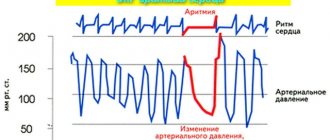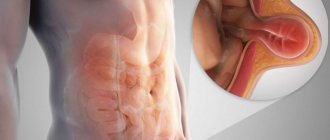Pneumothorax - what is it?
Pneumothorax is an accumulation of air/gas in the pleural cavity caused by a leak in the lung or damage to the chest.
The disease leads to collapse of lung tissue, displacement of the space located between the left and right pleural cavities (mediastinum) to the healthy side. As a result, compression of the blood vessels of the mediastinum occurs, and the dome of the diaphragm lowers. Disorders of circulatory and respiratory functions occur. Air during pneumothorax can pass between the layers of the parietal and visceral pleura through a defect in the chest or on the surface of the lung. This leads to an increase in intrapleural pressure (should normally be below atmospheric pressure), complete or partial collapse of the lung.
In the photo of the radiograph, pneumothorax looks like a clearing with a lightening of the pulmonary pattern. The long course of the pathology leads to atelectasis - the lung tissue collapses partially or completely, and ventilation is impaired.
The disease occurs not only in adults, but also in newborns. In infants, it is caused by overstretching of the alveoli or their rupture.
Types of pneumothorax
There are several classifications of pneumothorax, based on the provoking factor.
1. By origin, pneumothorax of the lungs is divided into:
- Traumatic. It is a consequence of closed/open chest injuries, due to which a lung ruptured.
- Spontaneous. It develops suddenly due to spontaneous disruption of the integrity of the lung tissue. May be:
- primary (idiopathic) - is a consequence of bullous disease of the lung or congenital weakness of the pleura, due to which the lung ruptures when coughing, diving, doing physical work, laughing, deep breathing;
- secondary (symptomatic) - occurs due to the destruction of lung tissue due to severe pathological processes (rupture of cavities due to tuberculosis, abscess, gangrene, etc.);
- recurrent (repetition of the spontaneous form).
- Artificial. Air is specially introduced into the pleural cavity during diagnosis or during treatment of lung disease.
2. Based on the volume of air trapped in the pleural cavity and the severity of lung collapse, pneumothorax occurs:
- total (full) - the lung is completely compressed;
- subtotal - lung collapse does not exceed 2/3 of the total volume;
- partial (limited, partial) - the lung collapses to 1/3 of its volume or less.
3. Based on distribution, pneumothorax is conventionally divided into:
- bilateral (compression of two lungs at once is observed);
- unilateral (only one lung collapses completely/partially - right or left).
The bilateral form of pneumothorax is characterized by critical impairment of respiratory function, which can lead to rapid death.
4. According to the complications that arise, pneumothorax occurs:
- uncomplicated (occurs as an independent disease);
- complicated (bleeding, pleurisy, subcutaneous or mediastinal emphysema, etc.).
5. By age factor:
- in newborns;
- in children;
- in adults.
6. Based on the presence of communication with the external environment, pathology is:
- Open. There is a defect in the chest through which air from the environment is “sucked” into the pleural cavity. When you inhale, air comes in, when you exhale, it comes out. The pressure inside the pleural cavity becomes equal to atmospheric pressure. As a result, lung collapse develops and the organ ceases to participate in the breathing process.
- Closed. The pleural cavity does not communicate with the environment. The volume of air trapped inside it does not increase. This is the mildest course of the disease, since a small accumulation of gas can resolve on its own.
- Valvular (tense). A special valve structure is formed in which air can enter the lung cavity, but cannot leave it. The volume of gas gradually increases. Acute respiratory failure, pleuropulmonary shock occurs, mediastinal organs are displaced, large blood vessels are compressed and cease to function normally.
A special form of pneumothorax is hydropneumothorax. It is characterized by the accumulation in the pleural cavity of not only gas/air, but also liquid.
First aid before doctors arrive
The condition in question poses a threat to the victim. And, if it becomes clear that a person has developed pneumothorax, the first thing those around them should do is urgently call an ambulance!
Before doctors arrive, people around the person in trouble can do the following:
- Provide the patient with maximum psychological and physical comfort. The patient should be in a semi-sitting position.
- Stop the bleeding (if we are talking about an open traumatic form).
- In case of loss of consciousness, it is necessary to bring the patient back to his senses using traditional methods (ammonia).
- If there is a state of painful shock, give painkillers.
- If the form is open, air access should be stopped with a tight bandage. It is recommended to use a special bandage for traumatology. These dressings are designed to suit the specific functions required.
To select and implement the right actions, it is best to coordinate the assistance algorithm via telephone consultation with the emergency service. If there are several people near the patient, one can provide consultation by phone, the other will act in accordance with the recommendations of the service specialist. A particularly important point in such a situation is the urgent delivery of the patient to the intensive care unit. The best option would be if transportation is carried out in an intensive care vehicle accompanied by a team of doctors. In a hospital setting, the person will be given the necessary measures. Often, urgent surgical intervention is required to relieve a dangerous condition.
Causes of pneumothorax
Pneumothorax is provoked by two groups of reasons:
- Mechanical damage to the lungs/chest.
- Diseases of the chest and lungs.
The first includes:
- closed chest injuries, which are accompanied by damage to the lungs from rib fragments;
- complications resulting from diagnostic/therapeutic measures (iatrogenic);
- open chest injuries;
- artificial pneumothorax, carried out for diagnostic (thoracoscopy) or therapeutic (pulmonary tuberculosis) purposes.
Diseases that cause pneumothorax of the lung include:
- rupture of caverns, breakthrough of caseous foci in tuberculosis;
- rupture of air cavities during bullous disease, spontaneous rupture of the esophagus (intestinal pneumothorax), rupture of a lung abscess into the pleural cavity (pyopneumothorax).
Symptoms of pneumothorax
The severity of the symptoms of pneumothorax depends on the degree of compression of the lung and the causes of the disease. Spontaneous pneumothorax usually develops acutely:
- a severe coughing attack suddenly occurs;
- the patient begins to choke;
- a stabbing pain appears on the side of the affected lung, which radiates to the neck, arm, and behind the sternum;
- when breathing and making any movements, the pain intensifies;
- fear of death arises;
- the face turns pale.
After some time, shortness of breath and pain intensity decrease. The development of mediastinal/subcutaneous emphysema is possible: when exhaling, air penetrates into the subcutaneous tissue of the neck, face, mediastinum, and chest. A characteristic swelling forms in these areas. When palpated, a slight crunch is heard. On auscultation, breathing on the side of the affected lung is not heard or is greatly weakened.
Approximately 6 hours after the onset of spontaneous pneumothorax, the pleura becomes inflamed. After a few days, the pleural lobes begin to thicken due to edema and fibrin deposits. This prevents the expansion of lung tissue and promotes the formation of pronounced pleural contractions.
If we are talking about open pneumothorax, the patient takes a forced position - he lies all the time on the injured side, pressing the wound with his hand. Air is noisily sucked into the pleural cavity, blood with foam (air admixture) is released out.
If you experience similar symptoms, consult your doctor
. It is easier to prevent a disease than to deal with the consequences.
Main signs of the condition
It is really important not to miss signals that a person is developing pneumothorax! Indeed, in such a situation, minutes can count.
The following manifestations may indicate the presence of the condition in question:
- Acute sharp and very severe pain behind the sternum.
- Shortness of breath.
- The occurrence of a dry, deep cough.
Typically, a person who has developed a dangerous pathology takes a characteristic sitting position. As a rule, the inability to lie down and take any other position indicates the presence of this particular problem.
Associated symptoms include changes in complexion (blue discoloration, unhealthy redness), profuse sweating, dizziness, and loss of consciousness. With some types of pneumothorax, the neck and sternum of a person take on unnatural shapes (swell, swell). The venous artery in the neck area is blown out. The patient's pupils are dilated. A person may feel panic and an uncontrollable fear of death. Excessive sweating, tremors of the limbs, unnatural paleness of the skin may indicate the development of shock.
Diagnosis of pneumothorax
Diagnosis of pneumothorax consists of an initial examination, during which characteristic symptoms of the disease are identified.
In the spontaneous form, percussion determines a box-shaped sound on the side of the pathology, a decrease in the size of absolute and relative cardiac dullness, and palpation determines the absence of vocal tremor.
In the valvular form, a shift of cardiac dullness towards the healthy lung, a sharp weakening of breathing (up to the complete absence of respiratory sounds) in the affected area are diagnosed.
The doctor makes the final diagnosis after an X-ray examination or tomography. X-ray in direct projection allows you to understand whether there is a pneumothorax and what its nature is. It is the basis for choosing additional diagnostic methods.
The main radiological sign of pneumothorax is an area of clearing in which there is no pulmonary pattern. It is located on the periphery of the pulmonary field and is separated from the collapsed lung by a clear boundary.
Radiography allows us to identify the presence of a connection between the formed pleural cavity and the external environment. With an open pneumothorax, the gas bubble increases during inspiration, the lung collapses, the dome of the diaphragm moves downward, and the mediastinal organs move to the healthy side.
In the closed form of the disease, the x-ray picture directly depends on the amount of gas accumulated in the pleural cavity and intrapleural pressure:
If the pressure is low, the amount of gas is minimal, the lung is slightly collapsed. During inhalation it increases in volume, and during exhalation it decreases.
If the pressure is high, the lung is sharply collapsed, the mediastinal organs are shifted towards the healthy organ, the diaphragm is shifted downwards, respiratory excursions are almost not noticeable.
In a situation where the pressure in the pleural cavity is equal to atmospheric pressure, the lung is only partially collapsed, the mediastinum is slightly displaced, and respiratory excursions are preserved.
With the development of valvular pneumothorax, the diseased lung does not change in size and configuration during breathing, the degree of its collapse is maximum, the mediastinum is shifted to the healthy side and moves slightly towards the lesion only on exhalation. With prolonged injection of air into the pleural cavity, flattening and drooping of the diaphragm and gas in the soft tissues of the chest are detected. In the total form, air occupies the entire pleural cavity, so in the picture the shadow of the mediastinum is moved to the healthy side, and the dome of the diaphragm is moved downwards.
Laboratory tests are not carried out when diagnosing pneumothorax, since they have no independent significance - the composition of urine and blood may not change at all against the background of this disease.
Pathogenesis
Primary spontaneous pneumothorax occurs as a result of rupture of subpleurally located emphysematous bullae, which are formed against the background of congenital defects of elastic pulmonary structures or against the background of cysts that have developed abnormally in their terminal bronchioles.
Until now, the pathogenesis of bullae formation remains unknown. It is believed that they are formed as a result of the degradation of elastic fibers in the lungs, which is caused by the activation of macrophages and neutrophils due to smoking. There is a shift in the balance between antiproteases, proteases and the antioxidant oxidation system. Formed bullae provoke inflammatory blockage of the small airways, which leads to an increase in intra-alveolar pressure and air enters the pulmonary interstitium.
The air moves towards the root of the lung, causing emphysema . Due to increased pressure in the mediastinum, the parietal mediastinal pleura ruptures with the development of pneumothorax. Increased intrapleural pressure prevents fluid from leaking into the pleural cavity.
As a result of a large primary spontaneous pneumothorax, a sharp decrease in the vital capacity of the lungs occurs, an increase in the alveolar-arterial oxygen gradient with the subsequent development of hypoxemia of varying severity. Hypoxemia develops against the background of ventilation-perfusion imbalance and the formation of a shunt from right to left. The clinical picture will directly depend on the severity of these disorders. Maintaining normal gas exchange does not allow the development of hypercapnia .
Rupture of lung tissue can occur in the area of pleural fusion during forced breathing or coughing. Secondary spontaneous pneumothorax develops when a pathological focus breaks into the pleural cavity in people suffering from destructive diseases of the pulmonary system ( lung gangrene , lung abscess , tuberculosis cavity , pulmonary infarction ). A similar process can occur in patients with histiocytosis X , neoplastic diseases of the mediastinum and lungs, chronic obstructive diseases ( bronchial asthma ).
Most often, right-sided pneumothorax is recorded, much less often - bilateral.
Treatment of pneumothorax
Spontaneous pneumothorax requires emergency medical attention. It can be provided by a person who does not have special education. Necessary:
- calm the patient;
- ensure the flow of fresh air into the room;
- call a doctor.
If the pneumothorax is open, you need to quickly apply an occlusive dressing that will hermetically close the defect in the chest. To make a bandage, you can use pure polyethylene, cellophane, cotton wool and gauze for fixation.
In the valvular form of pneumothorax, when air accumulates in the cavity and does not come out, it is necessary to perform a pleural puncture and remove free gas.
Qualified medical care for pneumothorax
Patients with pneumothorax are hospitalized in a surgical hospital in the pulmonology department. Treatment consists of:
- performing a puncture of the pleural cavity;
- air suction;
- normalization of internal pressure.
As a result of treatment, negative pressure is created in the space between the visceral and parietal layers of the pleura surrounding the lung.
If the pneumothorax is closed, gas is aspirated through a puncture system in a small operating room. For this, a special long needle with a tube attached to it is used. The needle is inserted from the side of the damaged lung along the midclavicular line in the area of the second intercostal space, along the upper edge of the underlying rib.
Total pneumothorax requires the installation of drainage and passive air aspiration according to Bulau. It is also possible to carry out active aspiration using an electric vacuum apparatus. Manipulations are performed in order to prevent rapid expansion of the lung and prevent the patient's shock reaction.
Open pneumothorax is treated according to the following scheme: it is transferred to a closed form, suturing the existing defect on the chest, and then the same procedures are carried out as for the closed form of the pathology. A valve pneumothorax is first converted to an open pneumothorax to reduce the pressure inside the pleural cavity. To do this, use a thick needle. Then they resort to surgical treatment.
When treating the disease, it is important to carry out a competent selection of painkillers in order to alleviate the patient’s condition during the period of collapse and expansion of the lung. To prevent a relapse, the doctor may prescribe the patient pleurodesis with silver nitrate, talc, glucose and other sclerosing drugs that artificially cause adhesions in the pleural cavity.
If spontaneous pneumothorax due to bullous emphysema recurs, routine removal of air cysts is performed.
Emergency care for pneumothorax in newborns
Pneumothorax in newborns is a severe pathology that is currently extremely rare. The most complex form of the disease is spontaneous pneumothorax. The causes of the disease can be: genetic pathology of the lungs, rupture of a cyst, rupture of a lung abscess.
Main symptoms: shallow breathing, anxiety, overexcitement, shortness of breath. Symptoms increase quickly, within 2-3 hours.
Emergency care for pneumothorax in newborns before the ambulance arrives: place the baby in an extended position so that the diaphragm and chest are free, and turn the baby’s head to the side.
Danger of pneumothorax
Provided that competent medical care is provided in a timely manner and there is a sufficient amount of rehabilitation measures, pneumothorax in most cases has a favorable prognosis. Death with this pathology occurs only with the development of an extensive tense valvular form, which is accompanied by a disorder of central hemodynamics and severe hypoxia.
Among the most common life-threatening complications of pulmonary pathology are:
- exudative pleurisy (fluid accumulates in the pleural cavity);
- pleural empyema (infectious inflammation is associated);
- rigid lung (the lung cannot expand due to the formed connecting cords);
- acute respiratory failure;
- anemic syndrome (hemoglobin level drops sharply);
- hemopneumothorax (blood rushes into the pleural cavity).
According to statistics, these complications develop in 50% of patients diagnosed with pneumothorax.
Prevention of pneumothorax
There are no specific methods for preventing pneumothorax. Necessary:
- timely treatment for lung diseases;
- be examined for the presence of nonspecific lung diseases, tuberculosis;
- stop smoking;
- spend more time outdoors;
- do breathing exercises.
People who have had the disease are advised to avoid physical activity. Immediately after surgery to eliminate the pathology, you cannot fly on an airplane, dive, or parachute for two weeks. It is important to prevent chest injury.
This article is posted for educational purposes only and does not constitute scientific material or professional medical advice.










